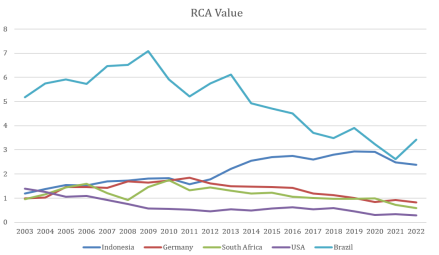
Submission to VIJ 2024-01-30
Keywords
- Student Respons,,
- Augmented Reality, RME Approach
Copyright (c) 2024 Ahmad Budi Sutrisno, Hamzah Upu, Dr. Rusli, MS

This work is licensed under a Creative Commons Attribution 4.0 International License.
Abstract
The use of technology in learning is increasingly becoming a major concern in the world of education. One innovation that attracts attention is the application of Augmented Reality (AR) Media with a Realistic Mathematics Education (RME) approach in mathematics learning. This study aims to investigate the response of students to the application of AR media with the RME Approach in the context of mathematics learning. Qualitative quantitative research methods are used with experiments that accept learning with AR media and the RME Approach. Data collection instrument questionnaire student response to the media used. The results of the study are expected to provide a deeper understanding of how students respond to the application of AR media with the RME Approach. The implications of these findings can be used to improve the design of mathematics learning that is more interactive and relevant to the needs of learners in this technological era. In conclusion, the application of AR media with the RME approach has the potential to improve student response and the effectiveness of mathematics learning
References
- Adi Nugroho. 2020. Learning mathematicsl Modelling With Augmented Reality Mobile Math Trails Program. Journal Mathematics Education.
- Crewell, J. W., & Plano Clark, V. L. (2011). Design and Conducting Mixed Methods Sage Publications.
- McClain, A. & North, T. (2021). Effect of technology integration on middle school math proficiency: A multiple linear regression study. International Journal of Education in Mathematics, Science, and Technology (IJEMST).
- Marcelo C. Borba. (2016). Blended Learning, E-Learning and Mobile Learning in Mathematics Education. ZDM. Mathematics Education.
- Sumedha Chauhan. 2017. A meta-Analysis of the Technology on Learning Affectiviness of Elementary Student. Computer and Education ELSEVIER Journals.
- Wang, H., Chen, G., & Liao, H. (2019). Exploring the effects of holographic augmented reality on students' learning performance, interests, and satisfaction in the flipped classroom. Interactive Learning Environments
- Zhang, Y., Liu, X., & Wang, X. (2019). The effects of 3D holographic technology on the learning performance of elementary school students in mathematics. Journal of Educational Technology & Society.